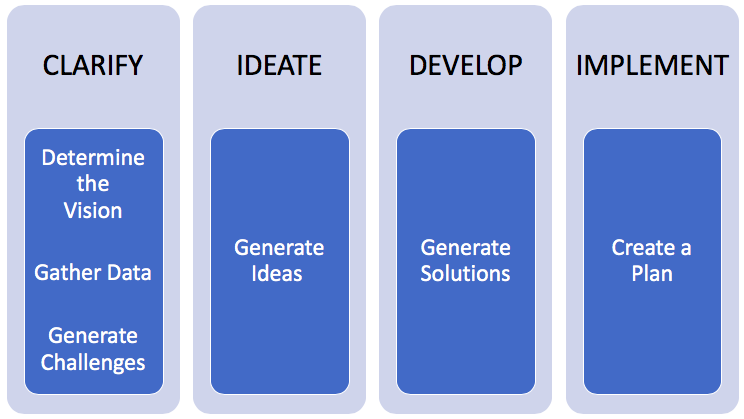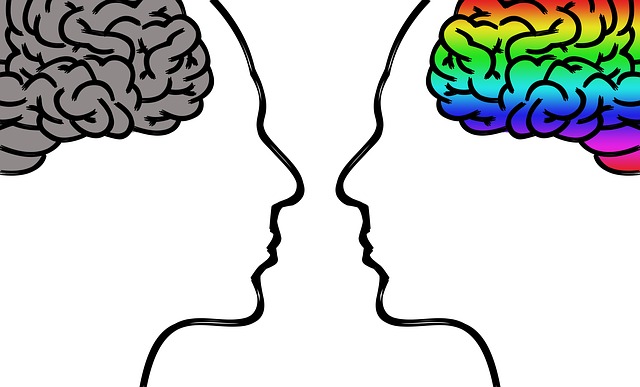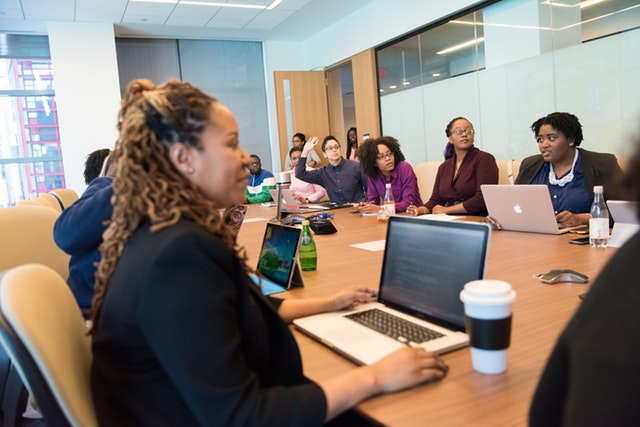
The Osborn Parnes creative problem-solving process is a structured way to generate creative and innovative ways to address problems.
If you want to grow in your career, you need to show you can provide value. This is true no matter where you sit in an organization.
You likely do this in your day-to-day activities.
But if you want to stand
Problem-solving skills are a great way to do this.
And there are many problem-solving approaches you can use.
By bringing creativity into the approach, you can get an even
Benefits of Using Creative Problem Solving

Using a creative problem-solving approach has multiple benefits:
- It provides a structured approach to problem-solving.
- It results in more possible solution options using both divergent and convergent approaches.
- You create innovative approaches to change.
- It’s a collaborative approach that allows multiple participants.
- By engaging multiple participants in finding solutions, you create a positive environment and buy-in from participants.
- This approach can be learned.
- You can use these skills in various areas of life.
Origin of the Osborn Parnes Creative Problem-solving Process

Alex Osborne and Sidney Parnes both focused much of their work on creativity. Osborn is credited with creating brainstorming techniques in the 1940s. He founded the Creative Education Foundation, which Parnes led.
The two collaborated to formalize the process., which is still taught today.
“Creativity can solve almost any problem. The creative act, the defeat of habit by originality, overcomes everything.”
– George Lois
What is the Osborn Parnes Creative Problem-solving Process
The Osborn Parnes model is a structured approach to help individuals and groups apply creativity to problem-solving.
There are 6 steps to the Osborn Parnes Creative Problem-Solving Process.
1. Mess-Finding / Objective Finding
During the Objective-Finding phase, you determine what the goal of your problem-solving process will be.
What’s the intent of carrying out your problem-solving process? Get clear on why you’re doing it. This helps ensure you focus your efforts in the right area.
Knowing your goals and objectives will help you focus your efforts where they have the most value.
2. Fact-Finding
The Fact-F
Once you’ve identified the area you want to focus on, gather as much information as you can. This helps you get a full picture of the situation.
Collect data, gather information, make observations, and employ other methods of learning more about the situation.
You may wish to identify success criteria for the situation at this step, also.
3. Problem-Finding
The Problem Finding phase allows you to dig deeper into the problem and find the root or real problem you want to focus on. Reframe the problem in order to generate creative and valuable solutions.
Look at the problem and information you’ve gathered in order to better clarify the problem you’ll be solving.
Make sure you’re focusing on the right problem before moving forward to develop a solution.
Personal example: you may think you want to get a second job so you can have more money to take your family on vacations. Upon deeper exploration, you realize your real desire and goal is to find ways to spend more time with your family. That’s the real problem you wish to solve.
Work example: your team has too much work to do and doesn’t have the time to create new software features that customers want. By digging in and reframing the problem you realize the team is more focused on handling support calls. You need to find a solution to handling the support calls, which would free up time for the team to focus on new development. You dig even deeper and learn the support calls are primarily focused on one problem that could be fixed to solve the problem.
“If you define the problem correctly, you almost have the solution.”
– Steve Jobs
4. Idea-Finding
The Idea-F
Come up with many different potential ideas to address the problem.
Don’t judge the suggestions. Instead, welcome even crazy ideas. Unexpected or odd ideas may help others generate great ideas.
Use brainstorming techniques, affinity mapping and grouping, and other tools to organize the input.
Use “yes, and…” statements rather than “No, but…” statements to keep ideas flowing and avoid discouraging participants from contributing.
5. Solution-Finding
The Solution Finding phase allows you to choose the best options from the ideas generated in the Idea Finding phase.
Set selection criteria for evaluating the best choices in order to select the best option. You can weight your criteria if needed to place more emphasis on criteria that may be more important than others.
Create a prioritization
6. Action-Finding
In the Action-Finding phase, develop a plan of action to implement the solution you’ve settled on as the best choice.
Depending on how complex the solution is, you may need to create a more complex plan of action. Your work breakdown structure of activities may be complex or simple.
When creating your action plan, identify who’s responsible for each of the activities, dependencies, and due dates.
If your chosen solution will impact many people or teams, you may need to do an impact analysis, create a communication plan, and get buy-in or participation from more groups. If your solution is simple, you will most likely have a much simpler plan.
“Creativity involves breaking out of established patterns in order to look at things in a different way.”
– Edward de Bono
Creative Problem-Solving Categories

Osborn and Parnes started working on creative problem-solving approaches in the 1950s. Since then, the process has evolved, but the focus on using creativity still remains important.
More recent modifications group the activities into four categories:
- Clarify
- Ideate
- Develop
- Implement
Each of these categories contain the steps listed above to carry out the problem-solving process.

As you can see, the steps are still there, but the grouping helps provide a bit more structure to the way teams can think about it.
Divergent and Convergent Thinking

The creative problem-solving process uses two thinking styles: divergent thinking and convergent thinking.
“Creativity is just connecting things. When you ask creative people how they did something, they feel a little guilty because they didn’t really do it, the just saw something. It seemed obvious to them after a while”
– Steve Jobs
Divergent Thinking
Divergent thinking is the creative process of generating multiple possible solutions and ideas. It’s usually done in a spontaneous approach where participants share multiple ideas, such as in a brainstorming session.
This approach allows more “out of the box” thinking for creative ideas.
Once ideas are generated via creative, free-flowing divergent approach, you then move onto convergent thinking.
Use questions to stimulate creative thinking.
When conducting divergent thinking sessions, don’t criticize suggestions. Instead, welcome ideas. Build on ideas that have been presented and even improve them if possible.
Instead of saying “No, but…” welcome ideas with responses such as “Yes, and…”
“We cannot solve our problems with the same thinking we used when we created them.”
– Albert Einstein
Convergent Thinking

Convergent thinking is the process of evaluating the ideas, analyzing them, and selecting the best solution.
It’s the process of taking all the information gathered in divergent thinking, analyzing it, and finding the single best solution to the problem.
Determine screening criteria for evaluating ideas. Spend time evaluating the options, and even improve suggestions if possible or needed.
If an idea seems too crazy, don’t immediately dismiss it. A friend told me once he thought the Bird or Lime scooter business models would never work. If it had been pitched to him, his response would have been “People won’t use them. They’ll destroy them. People won’t be allowed to use them without helmets and won’t be permitted to leave them on the sidewalk.” But it’s turned out in many cities to be a great mode of short-distance transportation.
Someone taking a strictly convergent approach to problem-solving might skip a creative brainstorming session and instead try to think of a straightforward answer to the problem.
However, it’s useful to employ both approaches to come up with more options and creative solutions to problems.
“You can’t use up creativity. The more you use, the more you have.”
– Maya Angelou
Running Your Problem-Solving Sessions

When using these techniques, use your great facilitation and leadership skills to keep the group focused and moving forward.
For the best meetings possible, follow the guidance in my book Bad Meetings Happen to Good People: How to Run Meetings That Are Effective, Focused, and Produce Results.
Summary
Problem-solving skills and tools are useful both at work and other areas of life.
It’s liberating to know you don’t have to have all the answers to make improvements.
Instead, knowing how to lead and collaborate with others to find solutions will help you stand out as a strong leader and valuable team member to your employer.
Don’t shy away from leading an improvement effort when faced with challenges. Doing so will give you greater confidence to search for solutions in other situations.
And you’ll be known as someone who can tackle challenges and make improvements in the organization. Creating this reputation will be great for your career.
“Think left and think right and think low and think high. Oh, the thinks you can think up if only you try”
– Dr. Seuss



This infomation is so helpful thank you
Interesting how many different ways critical thinking can be used.
These were amazing outlines of ways well more effective ways to apply different thinking and problem solving,. thank you for the insight .
I’m glad ‘problem finding’ is the basis for this. However, I think this is still reductive and presumes a ‘problem’ to be ‘solved’. I see ‘problem solving’ as a long way down the path in creativity.
Creativity starts with an objective, a challenge, an opportunity. Not a ‘problem’. A problem gets an answer. A challenge gets possibilities.
am a university student from kenya and my lecturer gave us a question on how to use osbons model to systemtically analyze how to find solutions about corruption in our country and i think the info i got here will help me tackle that question alot
Great reading – it helped me with my Creativity Tools homework